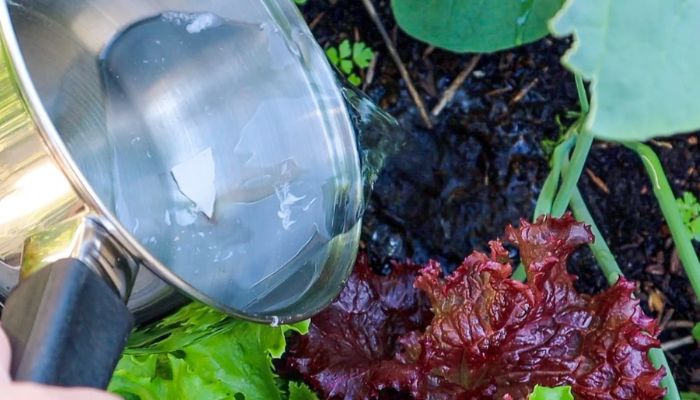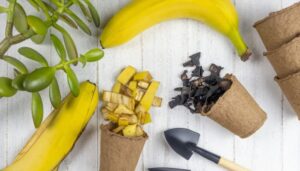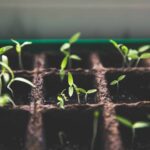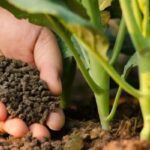As an avid organic gardener with over 7 years of hands-on experience, I often get asked – how do you make your own organic fertilizers? Well, crafting organic fertilizers at home is easier than you think! Over the years, I’ve experimented with various homemade concoctions using ingredients commonly found around the house and garden. Read on “How Can I Craft Organic Fertilizers at Home?” for more useful tips.
Not only are homemade organic fertilizers inexpensive, but they also help reduce waste. Plus, you get the satisfaction of knowing exactly what goes into the fertilizers you feed your plants. Whether you want to boost flowering, increase fruit production, or simply give your plants an extra nutrient kick, whipping up some organic plant food can help your garden thrive!
In this blog post, I’ll share my proven recipes and tips for making all-natural, organic fertilizers right from your own kitchen.
Why Organic Fertilizers?
Before jumping into the homemade fertilizer recipes, let’s first talk about why organic options are best for your plants. Organic fertilizers feed plants while enhancing the soil ecosystem instead of disrupting it like chemical fertilizers do. Over time, organic fertilizers improve soil health by increasing microbial activity and nutrient availability.
Organic fertilizers also release nutrients more slowly into the soil compared to chemical types. This means your plants get a gentle feeding over an extended period versus a sudden blast of nutrients that can “burn” plant roots and even kill them.
Plus, organic fertilizers simply produce healthier plants. They strengthen root systems, stimulate natural growth, and increase resistance to common garden pests and diseases. Simply put – organic fertilizers work in harmony with nature for beautiful, bountiful gardens and delicious homegrown fruits and veggies.
5 Homemade Organic Fertilizer Recipes
Now, let’s get into the good stuff – 5 of my easy, homemade organic fertilizer recipes you can craft using common household items!
- Compost Tea – This mild “tea” fertilizer is made by steeping compost in water, which extracts beneficial microbes and nutrients. To make it, fill a 5-gallon bucket with aged compost and add dechlorinated water until full. Let it steep for 7-10 days, stirring daily. When ready, the mixture will smell sweet. Dilute the finished tea with water at a 5:1 ratio before applying. Spray onto soil and plant leaves or irrigate through a watering can.

- Banana Peel Fertilizer – Did you know banana peels make a fantastic fertilizer? They’re packed with key nutrients like potassium, magnesium, calcium, and phosphorus. Simply chop 2-3 peels into small pieces and add to 2 cups of water. Allow to steep for 48 hours, stirring occasionally. Strain out the peel bits and dilute the “tea” at a 1:1 ratio with water. Use this fertilizer to water plants or pour directly onto the soil.
- Grass Clippings Fertilizer – Fresh grass clippings also make an excellent organic fertilizer. They break down quickly to deliver a fast-acting nutrient boost. First, allow grass clippings to partially dry and brown for 2-3 days after mowing your lawn. Next, work the grass clippings into the top few inches of soil surrounding your plants. As they decompose, the grass will release key nutrients like nitrogen, potassium, and phosphorus.
- Coffee Ground Fertilizer – Used coffee grounds from your morning brew are a free source of organic plant food! Coffee grounds contain nitrogen, potassium, phosphorus and other trace nutrients. Sprinkle them onto the soil surface when fresh. You can also brew grounds into a mild liquid fertilizer. Add 2 cups ground to 5 gallons of water. Allow to steep for 24 hours then strain. Dilute the “coffee” with water at a 3:1 ratio before using it to feed plants.
- Egg Shell Fertilizer – Crushed egg shells deliver an excellent calcium boost! Rinse and dry leftover shells, then grind them to a powder or fine grit using a mortar and pestle or food processor. Work the crushed egg shell into the soil around calcium-loving plants like tomatoes, peppers, and broccoli. The shells break down slowly to provide steady calcium nourishment.
Tips for Using Homemade Fertilizers
When using homemade organic fertilizers, keep these tips in mind:
- Always follow label directions if using pre-made organic products like fish emulsion or kelp meal.
- Test new homemade mixtures on a few plants first before wide-scale use.
- Apply homemade fertilizer in the early morning or late evening to avoid leaf burn.
- Rotate between different homemade fertilizers instead of relying on just one.
- Reapply every 2-4 weeks for steady plant nourishment.
- Consider your plants’ specific nutrient needs when selecting homemade fertilizers.
The Power of Organic Gardening
As you can see, crafting your own organic fertilizers is simple, budget-friendly and lets you take control over how your plants are fed! I encourage all gardeners to experiment with organic fertilization methods for growing truly healthy, productive gardens.
If you found this helpful, be sure to check out my other organic gardening tips on choosing the best potting soil mixes, building a compost bin, controlling garden pests naturally and more! I love helping others succeed in organic vegetable and flower gardening.
By harnessing the potential of kitchen scraps and garden waste, you can create nutrient-rich fertilizers that nourish your plants and improve soil health. These simple recipes and tips empower you to cultivate a thriving garden while reducing waste and saving money. Hope you get all the tips on “How Can I Craft Organic Fertilizers at Home?”

Katia Hougaard is a PhD candidate at Imperial College London, specializing in plant-aphid interactions. With a background in Plant Biology from the University of Texas at Austin, she focuses on the genetic and physiological resistance of Medicago truncatula to pea aphids. Katia has served as a science advisor for startups in vertical farming and the houseplant industry. She also mentors students and manages a research lab, contributing her expertise to both academic and entrepreneurial projects. At SuperbPlants.com, Katia shares her in-depth knowledge of plant biology, emphasizing sustainable practices and scientific integrity.






